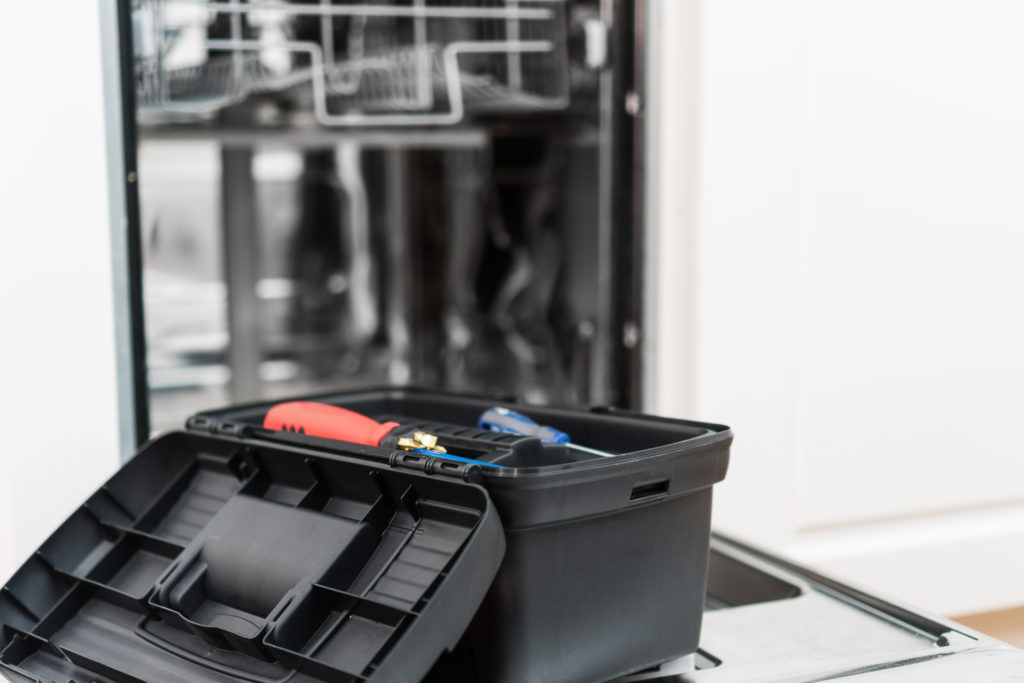I have always been a tinkerer.
My dad used to buy me all sorts of electromechanical toys as a kid.
Within a month, I would throw them against the wall to expose their inner workings.
He would look at me perplexed as I explained how the Farmer Says See-n-Say–a classic toy that plays the sounds of different animals when you pull a cord–works.
Later in junior high, I entered several science fairs and emerged among the top performers. I was a master at making volcanoes, robots, and radios. I would order the kits from the back of comics books.
So, when my appliances started to breakdown one by one during NYC’s mandatory lockdowns, I decided to find my inner tinkerer again.
When my garbage disposal’s switch broke, I replaced it with a jury-rigged version using a surge protector power strip.
But, my real triumph was my dishwasher.
It started faulting out after a few cycles. When I looked up the error, it said there was a leak somewhere. I search YouTube for a series of do-it-yourself experts. I own a Miele, and there are very few out there.
A few days later, after studying, I started my grand dismantling of this machine. I propped it up on some paint cans and found the source of the leak, the main circulation motor.
I called the manufacturer and asked for the part.
“Uh, sir, are you one of our trained technicians?” said the customer support representative.
“No. I am John—the guy locked in my apartment in NYC during a pandemic who really needs his dishwasher!” I said ever so politely.
She acquiesced and agreed to sell me the necessary parts for the repair.
“Does it come with an instruction manual or something, ma’am?” I said.
“No, sir, we don’t ship manuals with our parts,” she said sarcastically.
In about a week—just when my hands started falling off from washing dishes 3-4x per day—the parts arrived.

image: istockphoto
On a Saturday, I told my wife and kids to leave me be for a few hours while I worked.
I then systematically dismantled and reassembled the dishwasher—it was like a heart transplant.
And I became a hero.
I honestly think the machine works better than it did when we first got it seven years ago.
As I sat back marveling at my (simple) achievement, it reminded me of how I entered the Insurtech industry several years ago or how I have been learning the energy and data center industries recently.
If you are looking to break into a new industry and lack domain expertise, don’t despair.
There is a simple approach that will work every time.
I break it down into three easy steps:
(1) Find the experts — find the people with deep experience in the space and question them until you are exhausted. There are no dumb questions. These people may very well become long term guides and advisors.
(2) Map the system — distill your learning into a systems schematic. What are all the elements of the ecosystem? What parts are critical or core? Where are the problem areas? Use Mental models to help you understand the map. What is this system most similar to?
(3) Disassemble and reassemble — if you were to replace the ailing pieces—the parts most in need of replacement or an upgrade— how would you do it? What (new) tools would you need? Once you have that vision, rebuild it to be better.
Elon Musk, CEO of SpaceX (and Tesla), did just that with the space industry.
He started with first principles— what he likes to call the “the physics” of it–of making a rocket. He mapped the systems of the space industry. He then disassembled and reassembled it to create the first private company (started 18 years ago) to deliver humans to space.
(That achievement includes the development of reusable rockets that cost a fraction of their predecessors to make.)
“The way Elon talks about this is that you always need to start with the first principles of a problem. What are the physics of it? How much time will it take? How much will it cost? How much cheaper can I make it?” ― Ashlee Vance, Elon Musk: Tesla, SpaceX, and the Quest for a Fantastic Future
A global pandemic can get you thinking about how to fix things you never thought you would.
It’s an excellent time to start a company.
What are you going to fix next?


